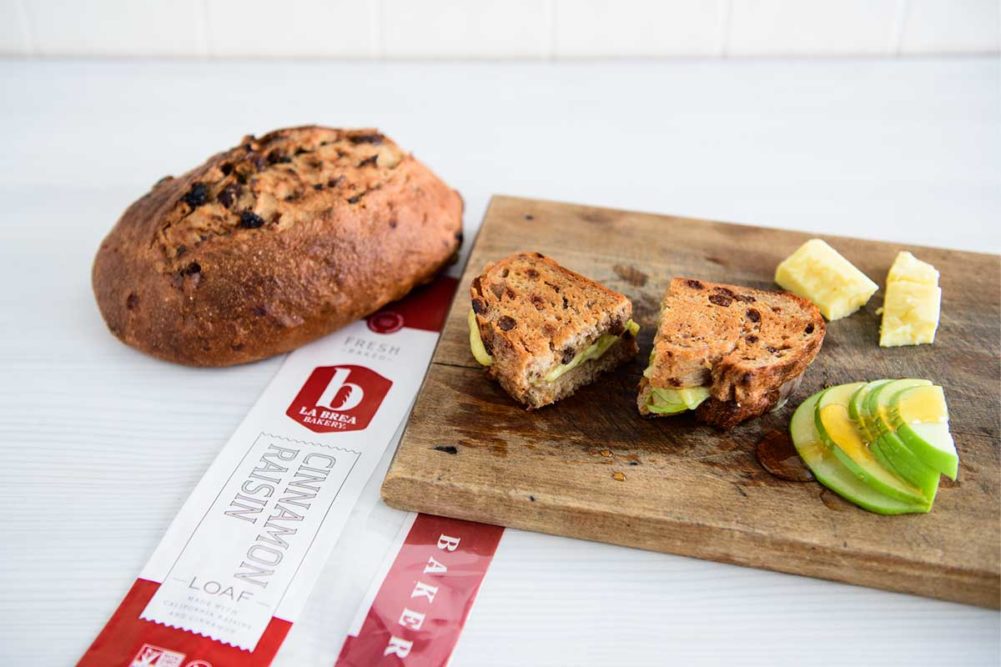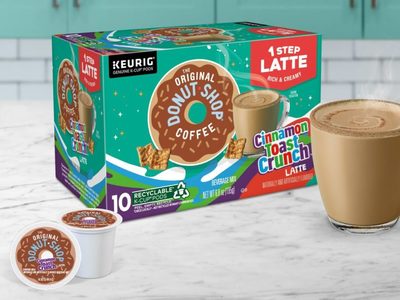Artisan bakeries are dabbling in a variety of baked goods and ingredients, from babka and bagels to local and sprouted grains. And they’re drawing inspiration from all over, creating a vibrant community that is embracing new flavors and formats.
“The trend toward local grains and small cottage bakeries is still on the upswing,” said Peter Reinhart, a James Beard award-winning baker who is an instructor at Johnson & Wales University. “Also, bagels are back, including sourdough bagels. Rich breads like babka and brioche variations seem also on the upswing.”
Guy Frenkel, founder of Ceor bakery in Los Angeles, who is known for pushing the envelope with his award-winning breads, said he’s seeing a surge in the creativity of artisan bakers.
“The idea that these bakers can liberate themselves and start exploring ingredients and shapes and new recipes, I see that more and more every year,” he said. “I used to feel like a lone player, and now I’m part of a movement. Creativity is very hard to replicate on scale. As long as the artisan bakers embrace the art part, the creative, the new, not just replicating but creating new stuff for their customers, I feel they all have job security in that aspect.”
As artisan bakers explore new formats, they are creating baked goods with a culinary spin.
“I’m seeing products in artisan bakeries that are more compatible with the café environment,” said Michael Kalanty, an award-winning baker and R&D specialist. “There are more freshly assembled sandwiches in artisan bakeries and breads that are made specifically to showcase certain kinds of fillings. Places that come to mind are Jane The Bakery in San Francisco or Amy’s Bread in New York. Both have a line of breads that seem designed especially to be used for sandwiches.”
Different flours are being used to make sturdier sliced breads and sandwich rolls. Sometimes they’re made with higher protein flour, such as semolina, to make them more durable, chewier but still tender. They can stand up to a drippy pulled pork, French dip and other saucy fillings.
“It’s becoming more like a meal in your hand,” Mr. Kalanty said. “So the breads and rolls themselves are becoming more functional in terms of being able to hold up to that application.”
Aspire Bakeries, Los Angeles, recently launched its La Brea Bakery Cinnamon Raisin bread, which is a departure from the breads the company typically makes.
“It’s slightly sweet and has a good cinnamon kick to it,” said Jon Davis, culinary innovation leader and vice president of R&D at Aspire Bakeries. “It’s tricky because cinnamon messes around with some of the yeast. It makes it a little temperamental, so you’ve got to find the right balance. We found a new ingredient to help us achieve that. Our flavor profiles are usually not sweet-forward; it’s more about letting the raisins come through.”
Aspire has also been busy making rolls for foodservice customers.
“From an artisan bread perspective, we’re working on enhancing our foodservice portfolio because we’re noticing an uptick in premade sandwiches with to-go foods,” Mr. Davis said. “These rolls are more and more in demand, so we’re focusing on that part of foodservice.”
The popularity of the smash burger in recent years prompted a request for artisan buns from foodservice customers to go with them, said John Friend, president of Farm to Market Bread Co., Kansas City, Kan.
“Smash burgers have been hot for the last few years,” he said. “Customers wanted potato buns for that, so we developed a clean label bun.”
Mr. Kalanty said he’s seeing burger buns that are loaded with spices and inclusions to bring out the umami flavors of the burgers and enhance the eating experience.
“I’ve seen burger buns that are made with sauerkraut in a sourdough variation,” he said. “In addition to the natural tanginess of the bread, they’ve got a firmer texture and can absorb the juice from a medium rare burger and still hold their shape. I’m seeing breads made with different kinds of fats, such as olive oil breads that include solid ingredients like caramelized onions and sauteed mushrooms.”
Signature rolls can carry their own savory profile, such as adding rosemary and fennel seeds to make a bread that is a good pairing with Italian food, Mr. Kalanty said. He cited Azikiwee Anderson’s San Francisco-based Rize Up Bakery as a good example of culinary-inspired sourdoughs.
“He makes an ube bread using purple yams from the Philippines, which is popular on Instagram because of its intriguing color,” Mr. Kalanty said. “Its subtle, unique flavor makes it a good accompaniment for Asian cuisine ingredients, especially those with a natural sweetness. His masala bread includes cilantro, curry leaves, turmeric and onions. When you toast it, you think you’re eating a roti or naan.”
Another instance of this trend is bakers working with microbreweries. They can incorporate the grains or malt used in the beer or the beer itself to create breads or other products to complement the beers.
“Where a brewery might use local grains to make a signature stout, the baker might say, ‘Let’s take the same grain and figure out how to make that into a pretzel,’ or ‘What can we do to put the flavor notes from that beer in a bread and turn that into a grilled cheese for you?’ ”
This article is an excerpt from the March 2023 issue of Baking & Snack. To read the entire feature on Artisan Bread, click here.






